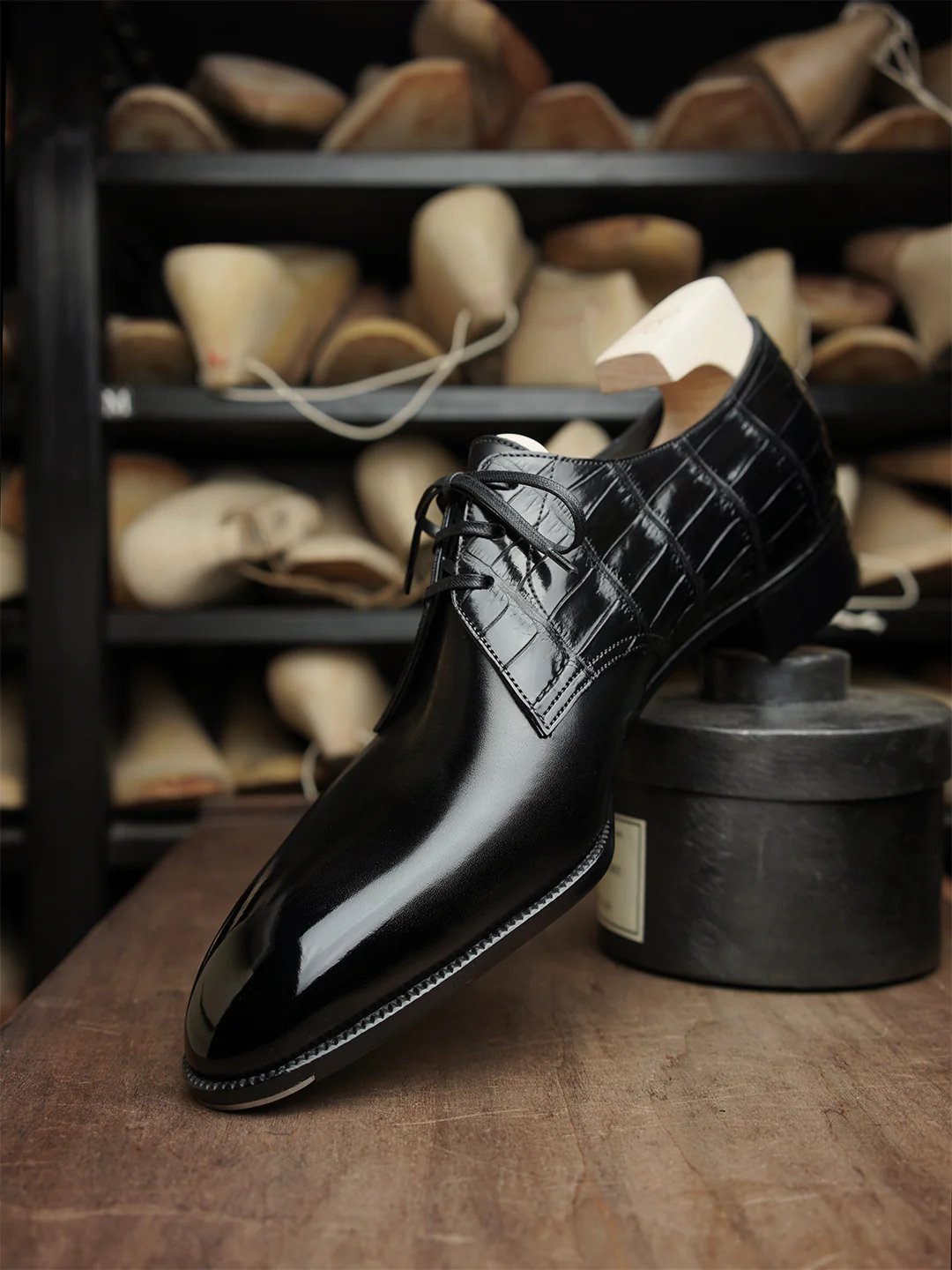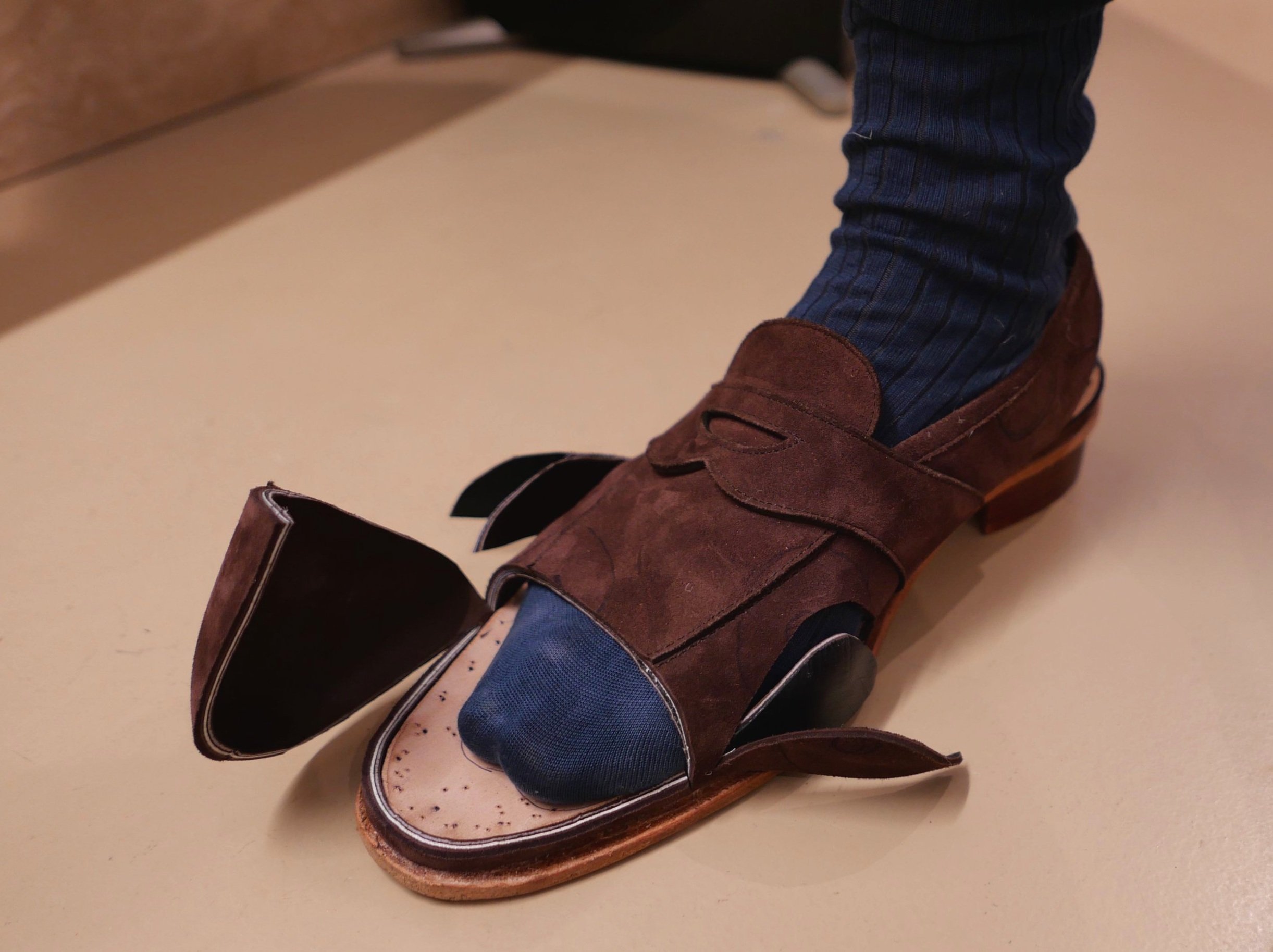Shoemaker Yohei Fukuda: Kaizen Chief.
In his own words, one of Japan’s best bespoke shoemakers explains how he fell in love with cordwaining — and why creating something of supreme quality is its own reward.
YOHEI FUKUDA (as told to Christian Barker): We don't have a classic leather shoemaking tradition in Japan — 100 years ago, we didn't have leather shoes. We had to learn shoemaking from Europe. The Japanese are quite good at remaking things, like cars or cameras, Toyota and Sony. Probably, we are not very good at starting to make new things. We see products differently from how European or American people see them; we research a lot, we study a lot, we always think about how to improve technology. Taking a product that has been invented elsewhere and improving upon it, that's kind of Japanese culture. We pay attention to small details.
My brother has his own brand as well now, he’s a jeweller. When he and I we were young, we would always talk about what we wanted to be, and we both agreed that we did not want to be a ‘salary man’ working in an office. I’m from Toyama. Toyama is in the Japanese countryside. It’s a good, good place. But there aren’t so many interesting places to visit or things to do. Ever since my brother and I were very young, we enjoyed making things by hand. Our grandfather loved making things by hand, too. So ever since we were boys, we always wanted to do something different. We always thought, it’s not cool to just be the same as other people.
Our generation, we were basically the first generation to begin using the internet. I bought my first PC when I was in my late teens. Suddenly, I could get so much new information. Before that, it was quite hard to get information, if you wanted to do something or go somewhere. It was very difficult. I think I got lucky. The internet, that opened up a whole world, the whole world.
When I was about eighteen years old, I had a girlfriend, she moved to Los Angeles. I was going to follow her, but we broke up. I thought, I have to go somewhere. And I’d always liked English clothes, so after high school I moved to Brighton in England. My image of England was of the British gentleman, and because of that, I thought I had to bring nice suits, nice shoes. But there was no opportunity to wear suits while I was a language school student. I could wear shoes, though.
In England, of course, good shoes are a little bit more reasonable to buy. We pay a lot of import duty in Japan, thirty percent, so shoes are quite expensive. I went up to London when I was nineteen years old and bought a pair of tobacco suede Crockett & Jones chukka boots. I felt so good! But as my feet are quite wide, with a high instep, wearing them was a bit painful for me.
One of my classmates at language school wanted to become a shoe designer. We had some spare time, and we decided to go to the Shoe Museum in Northampton. There, I looked at a pair of black oxfords made in 1910. The maker was unknown. But I was so impressed by these shoes that were ninety years old, I thought okay, I should try shoemaking. That's how I began — when I was twenty-one years old, I started learning to make shoes.
“It’s very important to me to keep these skills alive and pass them on to the next generation.”
I studied shoemaking at Tresham Institute. [Renowned British shoemaker] Tony Gaziano graduated from the same college and so did many other great shoemakers. Tony came to our college and taught us last making. This was a long time ago, around twenty years ago, when Tony was working for Edward Green and hadn’t yet founded Gaziano & Girling. Tony introduced me to a very experienced shoemaker in Northampton, Ian Wood. He used to work for John Lobb, George Cleverley, and others. I learnt shoemaking from Ian Wood when I was in my second year of college. I made lasts and I made two pairs of classic shoes by hand.
After graduation day, I brought these two pairs to London and visited all the bespoke shoe companies, and asked if I could work for them. George Cleverley was the last place I went to visit, and they suggested I go to John Lobb, because it’s a bigger company. But I told them I’d been everywhere and I asked them to please give me a chance. They said okay and I started working there, doing repairs.
There is a great satisfaction to making something with your hands and when customers are very happy, that makes me very happy too. To make customers happy, we have to make a very good product. That's very important for me. A lot of Japanese people don't just work for the money, we want to have pride, to be confident, we want pay attention to small details, we want to be satisfied in ourselves.
There are so many shoe brands in the world. Ten years ago, if you asked a gentleman, which country makes the best shoes? They’d probably say, England, Italy, France. They didn't know about Japan. But now, we have more than 30 bespoke shoe companies in Tokyo alone. Tokyo is a big city, but we have many competitors so to succeed, we have to be the best. We have to give the best service, to make our quality higher. Fortunately, we see a lot of young, motivated people who want to become shoemakers. It’s very important to me to keep these skills alive and pass them on to the next generation.
We make about 100 pairs of bespoke shoes in a year, and about 200 pairs of ready-to-wear shoes. We spend around 120 to 130 hours to make up one pair of bespoke shoes. Our process takes time because we make a pair of fitting shoes, the same construction, same model, same leather as the final shoes. The only difference is, we use a dummy heel, but we don't put a proper sole. I want to check the fitting with the clients, and with a fitting shoe, I can cut it open and see inside of the shoes. We spend a lot of time making the fitting shoes.
Because it takes a long time to make our shoes, we have about 200 back orders. That means our waiting time, it's quite long, about two years (between first ordering and finally receiving a pair of bespoke shows). I know two years seems like a long time. Some people enjoy waiting, though — it can make people more motivated. Having something to think about, to dream about, that's quite important.



